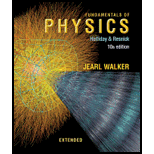
Concept explainers
Does the spacing between fringes in a two-slit interference pattern increase, decrease, or stay the same if (a) the slit separation is increased, (b) the color of the light is switched from red to blue, and (c) the whole apparatus is submerged in cooking sherry? (d) If the slits are illuminated with white light, then at any side maximum, does the blue component or the red component peak closer to the central maximum?
To find:
a) Does the spacing between the fringes in a two-slit interference pattern increase, decrease, or stay the same if the slit separation is increased?
b) Does the spacing between the fringes in a two-slit interference pattern increase, decrease, or stay the same if the color of the light is switched from red to blue?
c) Does the spacing between the fringes in a two-slit interference pattern increase, decrease, or stay the same if the whole apparatus is submerged in cooking sherry?
d) If the slits are illuminated with white light, then at any side maximum does the blue component or the red component peak closer to the central maximum?
Answer to Problem 1Q
Solution:
a) The spacing between the fringes in a two-slit interference pattern decreases if the slit separation is increased.
b) The spacing between the fringes in a two-slit interference pattern decreases if the color of the light is switched from red to blue.
c) The spacing between the fringes in a two-slit interference pattern decreases if the whole apparatus is submerged in cooking sherry.
d) If the slits are illuminated with white light, then at any side maximum the blue component peak will be closer to the central maximum.
Explanation of Solution
1) Concept:
We use the concept of double slit experiment. Using the equation, we can determine whether the spacing between the fringes will increase, decrease or stay same. For part c), we use the relation between the initial and the new wavelength.
2) Formulae:
3) Calculations:
a) Does the spacing between the fringes in a two-slit interference pattern increase, decrease, or stay the same if the slit separation is increased?
Using the equation,
In this equation,
From the above equation if we increase the slit separation d, the spacing between the fringes decreases.
b) Does the spacing between the fringes in a two-slit interference pattern increase, decrease, or stay the same if the color of the light is switched from red to blue?
We know that the wavelength of the light spectrum decreased from red to blue.
So, here, if
c) Does the spacing between the fringes in a two-slit interference pattern increase, decrease, or stay the same if the whole apparatus is submerged in cooking sherry?
We know,
We can write the wavelength as
We get,
So,
d) If the slits are illuminated with white light, then at any side maximum does the blue component or the red component peak closer to the central maximum?
Here, the blue component peak will be closer to the central maximum because
And for the lowest value of
Hence, the blue component will be closer to the central maximum.
Conclusion:
We can use the concept of double slit experiment to determine the spacing between the fringes.
Want to see more full solutions like this?
Chapter 35 Solutions
Fundamentals of Physics Extended
Additional Science Textbook Solutions
Glencoe Physics: Principles and Problems, Student Edition
University Physics Volume 2
MODERN PHYSICS (LOOSELEAF)
Lecture- Tutorials for Introductory Astronomy
Physics (5th Edition)
University Physics (14th Edition)
- Consider a single-slit diffraction pattern for =589 nm, projected on a screen that is 1.00 m from a slit of width 0.25 mm. How far from the center of the pattern are the centers of the first and second dark fringes?arrow_forwardWhy is it much more difficult to see interference fringes for light reflected from a thick piece of glass than from a thin film? Would it be easier if monochromatic light were used?arrow_forwardFor 600-nm wavelength light and a slit separation of 0.12 mm, what are the angular positions of the first and third maxima in the double slit interference pattern?arrow_forward
- What effect does increasing the wedge angle have on the spacing of interference fringes? If the wedge angle is too large, fringes are not observed. Why?arrow_forwardA beam of monochromatic green light is diffracted by a slit of width 0.550 mm. The diffraction pattern forms on a wall 2.06 m beyond the slit. The distance between the positions of zero intensity on both sides of the central bright fringe is 4.10 mm. Calculate the wavelength of the light.arrow_forwardWhen a monochromatic light of wavelength 430 nm incident on a double slit of slit separation 5 m, there are 11 interference fringes in its central maximum. How many interference fringes will be in the central maximum of a light of wavelength 632.8 nm for the same double slit?arrow_forward
- The interference pattern of a He-Ne laser light (=632.9nm) passing through two slits 0.031 mm apart is projected on a screen 10.0 m away. Determine the distance between the adjacent bright fringes.arrow_forwardAt what angle is the first-order maximum for 450-nm wavelength blue light falling on double slits separated by 0.0500 mm?arrow_forwardAn effect analogous to two-slit interference can occur with sound waves, instead of light. In an open field, two speakers placed 1.30 m apart are powered by a single-function generator producing sine waves at 1200-Hz frequency. A student walks along a line 12.5 m away and parallel to the line between the speakers. She hears an alternating pattern of loud and quiet, due to constructive and destructive interference. What is (a) the wavelength of this sound and (b) the distance between the central maximum and the first maximum (loud) position along this line?arrow_forward
- How many dark fringes will be produced on either side of the central maximum if light (935 nm) is incident on a single slit that is 6.73×10-6 m wide?arrow_forwardThe second - order dark fringe in a single - slit diffraction pattern is 1.40 mm from the center of the central maximum. Assuming the screen is 85.0 cm from a slit of width 0.800 mm and assuming monochromatic incident light, calculate the wavelength of the incident light.arrow_forward
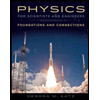 Physics for Scientists and Engineers: Foundations...PhysicsISBN:9781133939146Author:Katz, Debora M.Publisher:Cengage Learning
Physics for Scientists and Engineers: Foundations...PhysicsISBN:9781133939146Author:Katz, Debora M.Publisher:Cengage Learning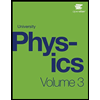 University Physics Volume 3PhysicsISBN:9781938168185Author:William Moebs, Jeff SannyPublisher:OpenStax
University Physics Volume 3PhysicsISBN:9781938168185Author:William Moebs, Jeff SannyPublisher:OpenStax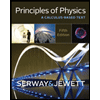 Principles of Physics: A Calculus-Based TextPhysicsISBN:9781133104261Author:Raymond A. Serway, John W. JewettPublisher:Cengage Learning
Principles of Physics: A Calculus-Based TextPhysicsISBN:9781133104261Author:Raymond A. Serway, John W. JewettPublisher:Cengage Learning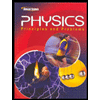 Glencoe Physics: Principles and Problems, Student...PhysicsISBN:9780078807213Author:Paul W. ZitzewitzPublisher:Glencoe/McGraw-Hill
Glencoe Physics: Principles and Problems, Student...PhysicsISBN:9780078807213Author:Paul W. ZitzewitzPublisher:Glencoe/McGraw-Hill



